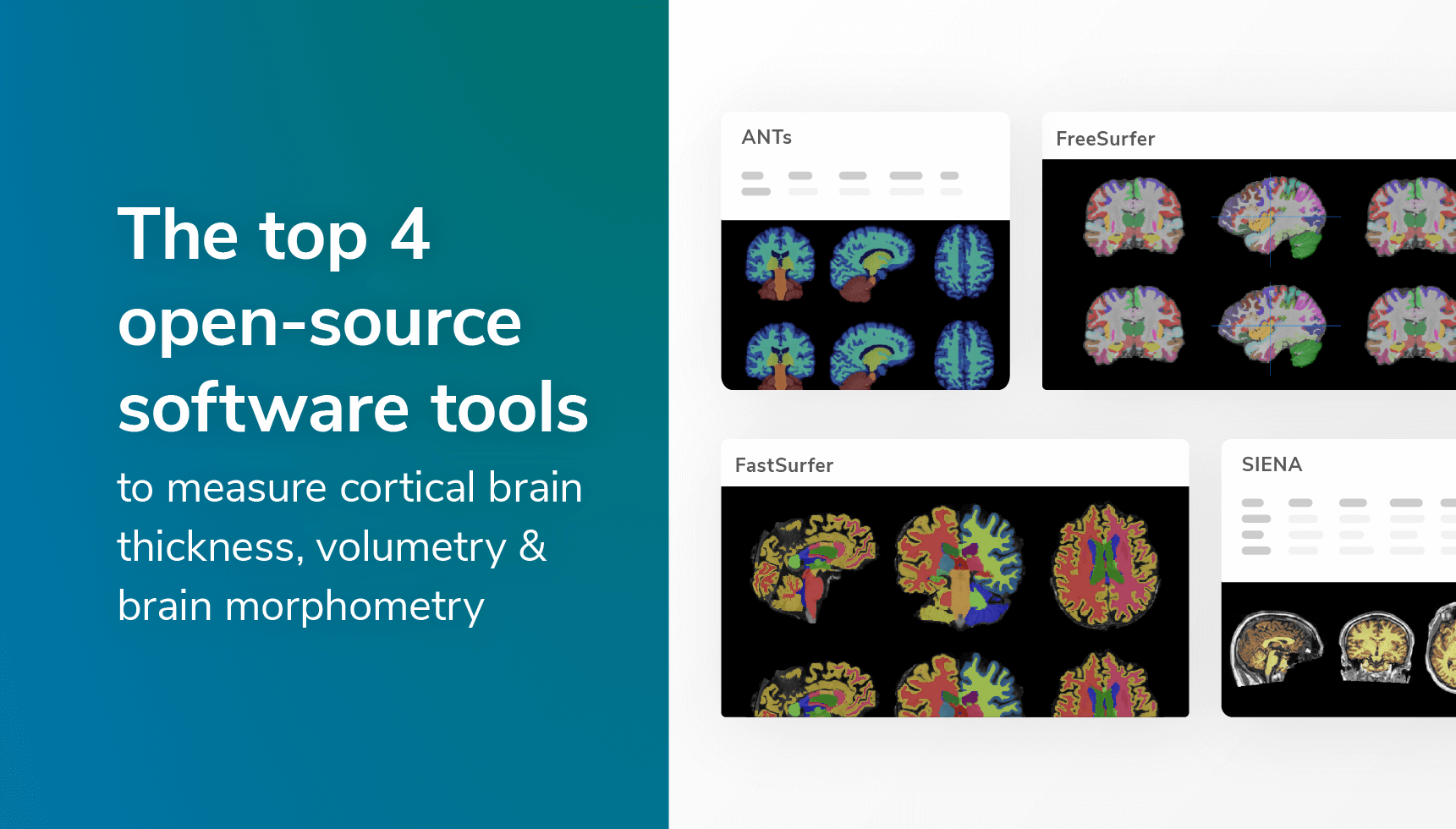Imaging trends and tools are evolving more than ever. Many companies and technicians are developing new algorithms to help researchers and clinical professionals diagnose and measure disease progression efficiently.
Many tools are being developed every day, and even though some tools that we are going to discuss were made years ago, they are still the standard. This shows how complicated it is to improve current results, widely accepted by the scientific community. That is the case with the following open-source tools.
ANTs Advanced Normalization Tools
Powerful open-source tool for registration and normalization of brain imaging. Has a powerful tool for brain segmentation for six different tissues and cortical thickness computation. Can be used to apply cortical labeling using any anatomical atlas and the proper brain template. Studies show that it has a higher predictive performance than FreeSurfer (https://pubmed.ncbi.nlm.nih.gov/24879923/).
FreeSurfer
This is probably the most widely used open-source tool for structural, functional, and diffusion brain imaging. It is the standard tool for brain segmentation and volumetry computation. The software’s citations are already more than 6500 in scientific publications (source: https://www.sciencedirect.com/) . The segmentation pipeline also includes hippocampal subfields segmentation, brainstem substructures segmentation, longitudinal volumetric analysis, and more. This tool is also computationally expensive, so it might take a long time to process.
FastSurfer
Built on top of the FreeSurfer brain reconstruction method, accelerates considerably the computation of brain morphometry. Open-source validated machine learning algorithm that can compute the bran morphometrics in a fraction of the time. It can mimic FreeSurfer’s brain segmentation and parcellation in less than one minute and cortical surface reconstruction in less than an hour.
SIENA (FSL)
Cross-sectional and longitudinal brain analysis compute brain volume from a single T1 image. It is also widely used. Part of the FSL library, which also contains many other imaging capabilities on a wide range of imaging modalities.
Yes, but…
It can be quite challenging to use these kinds of tools by yourself. You have to read and understand the documentation, organize your data properly so the tool knows how to read it, write the command or build a script that will run the tool, and have the proper system configuration…
It can also cause a mess in your computer as the amount of files produced by these tools is not small. It can be hard to do a proper analysis and a pain to navigate through the myriad of results that each tool can produce. Managing the data adds a lot of burden in a task that should be simple. It is prone to error and resource-consuming.
QMENTA can help you with that because all the previous tools are available in the QMENTA platform. You can just plug your data into the platform and start analyzing. It takes seconds to start the analysis and just a few clicks. All the results are saved afterwards and organized in your project for you to inspect.

